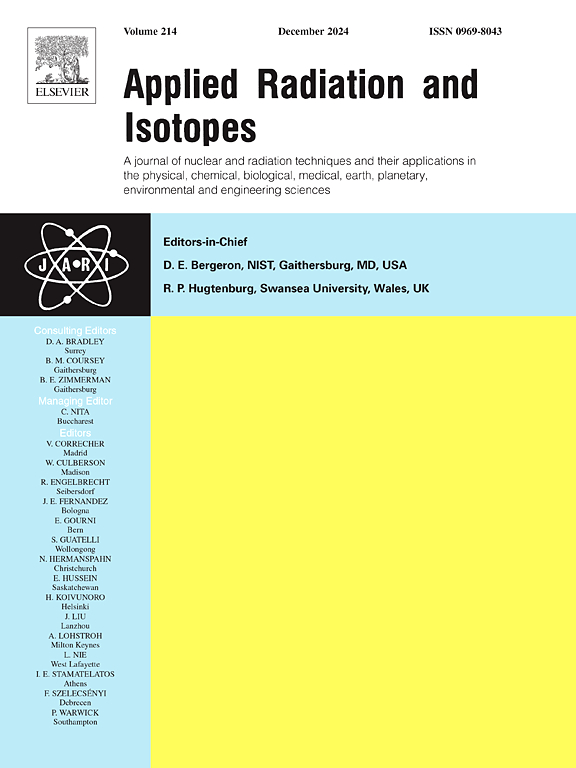First 70Zn(p,x) nuclear cross section measurements for theranostic 67Cu radionuclide production extended up to 100 MeV
IF 1.8
3区 工程技术
Q3 CHEMISTRY, INORGANIC & NUCLEAR
引用次数: 0
Abstract
In this work the nuclear reaction routes 70Zn(p,x)64,67Cu, 66,67Ga, and 65,69mZn, induced by a high-energy proton beam up to 100 MeV have been investigated. Demand for 67Cu is increasing worldwide because it is known to be one of the best radionuclides having theranostic properties. Thus, efforts to improve its global production are underway. In previous studies, experimental data about nuclear cross-section measurements on 70Zn-enriched targets induced by proton beams were limited to an energy range of up to 70 MeV. Our goal was to extend nuclear data on 70Zn over a wider and unexplored so far region from 42 MeV to 98 MeV. As a result, our data turned out to be in good agreement with the literature ones in the overlapping energy range. In addition, to the best of our knowledge, new nuclear data exceeding 70 MeV were provided, demonstrating an excellent analytical method for producing 67Cu in the extended energy range.
首次测量了用于治疗性 67Cu 放射性核素生产的 70Zn(p,x)核截面,并将其扩展到 100 MeV。
在这项工作中,我们研究了在高达 100 兆电子伏特的高能质子束诱导下,70Zn(p,x)64、67Cu、66、67Ga 和 65、69mZn 的核反应路线。众所周知,67Cu 是具有治疗特性的最佳放射性核素之一,因此全世界对 67Cu 的需求正在不断增加。因此,目前正在努力提高其全球产量。在以前的研究中,质子束对富集 70Zn 靶件的核截面测量实验数据仅限于高达 70 MeV 的能量范围。我们的目标是将 70Zn 的核数据扩展到 42 MeV 至 98 MeV 的更宽广且迄今尚未探索的区域。结果表明,在重叠的能量范围内,我们的数据与文献数据十分吻合。此外,据我们所知,我们还提供了超过 70 MeV 的新核数据,证明了在扩展能量范围内生成 67Cu 的出色分析方法。
本文章由计算机程序翻译,如有差异,请以英文原文为准。
求助全文
约1分钟内获得全文
求助全文
来源期刊

Applied Radiation and Isotopes
工程技术-核科学技术
CiteScore
3.00
自引率
12.50%
发文量
406
审稿时长
13.5 months
期刊介绍:
Applied Radiation and Isotopes provides a high quality medium for the publication of substantial, original and scientific and technological papers on the development and peaceful application of nuclear, radiation and radionuclide techniques in chemistry, physics, biochemistry, biology, medicine, security, engineering and in the earth, planetary and environmental sciences, all including dosimetry. Nuclear techniques are defined in the broadest sense and both experimental and theoretical papers are welcome. They include the development and use of α- and β-particles, X-rays and γ-rays, neutrons and other nuclear particles and radiations from all sources, including radionuclides, synchrotron sources, cyclotrons and reactors and from the natural environment.
The journal aims to publish papers with significance to an international audience, containing substantial novelty and scientific impact. The Editors reserve the rights to reject, with or without external review, papers that do not meet these criteria.
Papers dealing with radiation processing, i.e., where radiation is used to bring about a biological, chemical or physical change in a material, should be directed to our sister journal Radiation Physics and Chemistry.
 求助内容:
求助内容: 应助结果提醒方式:
应助结果提醒方式:


